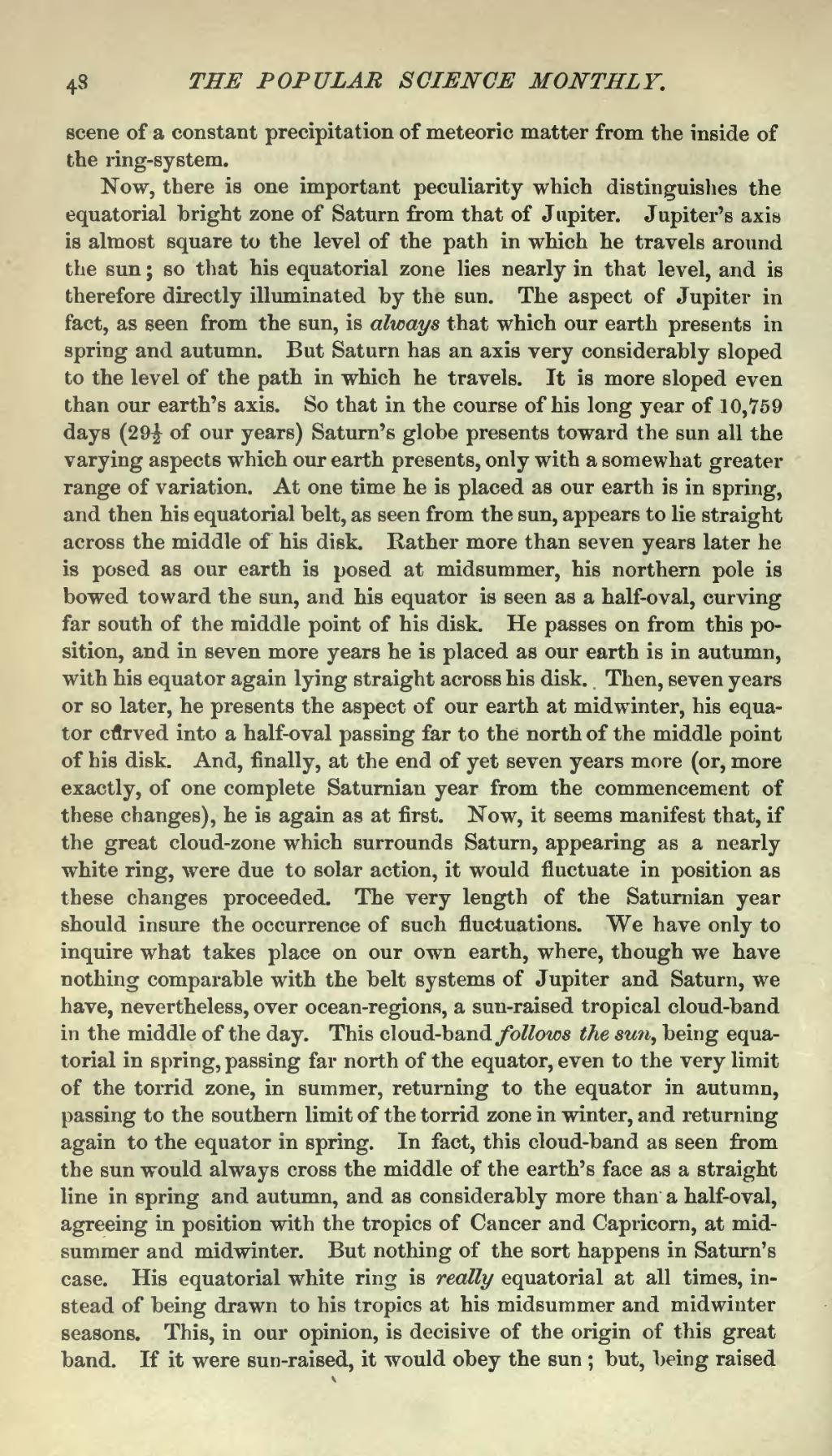scene of a constant precipitation of meteoric matter from the inside of the ring-system.
Now, there is one important peculiarity which distinguishes the equatorial bright zone of Saturn from that of Jupiter. Jupiter's axis is almost square to the level of the path in which he travels around the sun; so that his equatorial zone lies nearly in that level, and is therefore directly illuminated by the sun. The aspect of Jupiter in fact, as seen from the sun, is always that which our earth presents in spring and autumn. But Saturn has an axis very considerably sloped to the level of the path in which he travels. It is more sloped even than our earth's axis. So that in the course of his long year of 10,759 days (29½ of our years) Saturn's globe presents toward the sun all the varying aspects which our earth presents, only with a somewhat greater range of variation. At one time he is placed as our earth is in spring, and then his equatorial belt, as seen from the sun, appears to lie straight across the middle of his disk. Rather more than seven years later he is posed as our earth is posed at midsummer, his northern pole is bowed toward the sun, and his equator is seen as a half-oval, curving far south of the middle point of his disk. He passes on from this position, and in seven more years he is placed as our earth is in autumn, with his equator again lying straight across his disk. Then, seven years or so later, he presents the aspect of our earth at midwinter, his equator curved into a half-oval passing far to the north of the middle point of his disk. And, finally, at the end of yet seven years more (or, more exactly, of one complete Saturnian year from the commencement of these changes), he is again as at first. Now, it seems manifest that, if the great cloud-zone which surrounds Saturn, appearing as a nearly white ring, were due to solar action, it would fluctuate in position as these changes proceeded. The very length of the Saturnian year should insure the occurrence of such fluctuations. We have only to inquire what takes place on our own earth, where, though we have nothing comparable with the belt systems of Jupiter and Saturn, we have, nevertheless, over ocean-regions, a sun-raised tropical cloud-band in the middle of the day. This cloud-band follows the sun, being equatorial in spring, passing far north of the equator, even to the very limit of the torrid zone, in summer, returning to the equator in autumn, passing to the southern limit of the torrid zone in winter, and returning again to the equator in spring. In fact, this cloud-band as seen from the sun would always cross the middle of the earth's face as a straight line in spring and autumn, and as considerably more than a half-oval, agreeing in position with the tropics of Cancer and Capricorn, at midsummer and midwinter. But nothing of the sort happens in Saturn's case. His equatorial white ring is really equatorial at all times, instead of being drawn to his tropics at his midsummer and midwinter seasons. This, in our opinion, is decisive of the origin of this great band. If it were sun-raised, it would obey the sun; but, being raised
